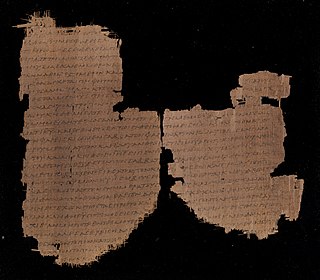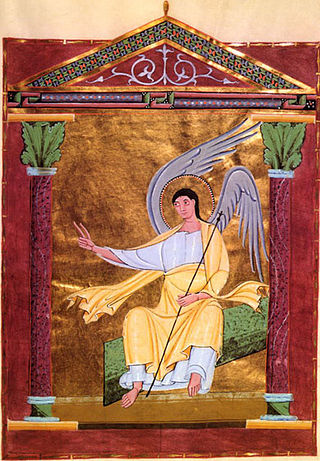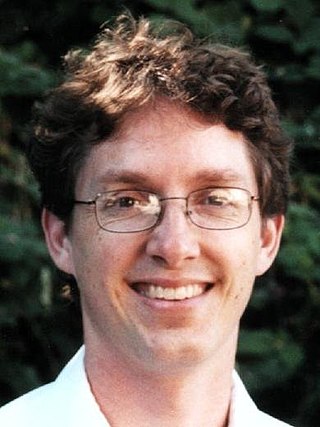
In Christianity, Christology, translated from Greek as 'the study of Christ', is a branch of theology that concerns Jesus. Different denominations have different opinions on questions such as whether Jesus was human, divine, or both, and as a messiah what his role would be in the freeing of the Jewish people from foreign rulers or in the prophesied Kingdom of God, and in the salvation from what would otherwise be the consequences of sin.

The Gospel of Luke tells of the origins, birth, ministry, death, resurrection, and ascension of Jesus Christ. Together with the Acts of the Apostles, it makes up a two-volume work which scholars call Luke–Acts, accounting for 27.5% of the New Testament. The combined work divides the history of first-century Christianity into three stages, with the gospel making up the first two of these – the life of Jesus the Messiah from his birth to the beginning of his mission in the meeting with John the Baptist, followed by his ministry with events such as the Sermon on the Plain and its Beatitudes, and his Passion, death, and resurrection.
Gospel originally meant the Christian message, but in the 2nd century it came to be used also for the books in which the message was reported. In this sense a gospel can be defined as a loose-knit, episodic narrative of the words and deeds of Jesus, culminating in his trial and death and concluding with various reports of his post-resurrection appearances. Modern biblical scholars are cautious of relying on the gospels uncritically, but nevertheless, they provide a good idea of the public career of Jesus, and critical study can attempt to distinguish the original ideas of Jesus from those of the later Christian authors.
The New Testament (NT) is the second division of the Christian biblical canon. It discusses the teachings and person of Jesus, as well as events relating to first-century Christianity. The New Testament's background, the first division of the Christian Bible, is called the Old Testament, which is based primarily upon the Hebrew Bible; together they are regarded as sacred scripture by Christians.

The resurrection of Jesus is the Christian belief that God raised Jesus from the dead on the third day after his crucifixion, starting – or restoring – his exalted life as Christ and Lord. According to the New Testament writing, Jesus was firstborn from the dead, ushering in the Kingdom of God. He appeared to his disciples, calling the apostles to the Great Commission of forgiving sin and baptizing repenters, and ascended to Heaven.

The empty tomb is the Christian tradition that the tomb of Jesus was found empty after his crucifixion. The canonical gospels each describe the visit of women to Jesus' tomb. Although Jesus' body had been laid out in the tomb after crucifixion and death, the tomb is found to be empty, the body gone, and the women are told by angels that he has risen.
Biblical inerrancy is the belief that the Bible "is without error or fault in all its teaching"; or, at least, that "Scripture in the original manuscripts does not affirm anything that is contrary to fact". Some equate inerrancy with biblical infallibility; others do not.
The quest for the historical Jesus consists of academic efforts to determine what words and actions, if any, may be attributed to Jesus, and to use the findings to provide portraits of the historical Jesus. Since the 18th century, three scholarly quests for the historical Jesus have taken place, each with distinct characteristics and based on different research criteria, which were often developed during each specific phase. These quests are distinguished from earlier approaches because they rely on the historical method to study biblical narratives. While textual analysis of biblical sources had taken place for centuries, these quests introduced new methods and specific techniques to establish the historical validity of their conclusions.

The Christ myth theory, also known as the Jesus myth theory, Jesus mythicism, or the Jesus ahistoricity theory, is the view that the story of Jesus is a work of mythology with no historical substance. Alternatively, in terms given by Bart Ehrman paraphrasing Earl Doherty, it is the view that "the historical Jesus did not exist. Or if he did, he had virtually nothing to do with the founding of Christianity."
Norman Leo Geisler was an American Christian systematic theologian, philosopher, and apologist. He was the co-founder of two non-denominational evangelical seminaries.
Gary Robert Habermas is an American New Testament scholar and theologian who frequently writes and lectures on the resurrection of Jesus. He has specialized in cataloging and communicating trends among scholars in the field of historical Jesus and New Testament studies. He is distinguished research professor and chair of the department of philosophy and theology at Liberty University.

The vision theory or vision hypothesis is a term used to cover a range of theories that question the physical resurrection of Jesus, and suggest that sightings of a risen Jesus were visionary experiences, often classified as grief or bereavement visions. It was first formulated by David Friedrich Strauss in the 19th century, and has been proposed in several forms by critical contemporary scholarship, including Helmut Koester, Géza Vermes, and Larry Hurtado, and members of the Jesus Seminar such as Gerd Lüdemann.

Bart Denton Ehrman is an American New Testament scholar focusing on textual criticism of the New Testament, the historical Jesus, and the origins and development of early Christianity. He has written and edited 30 books, including three college textbooks. He has also authored six New York Times bestsellers. He is the James A. Gray Distinguished Professor of Religious Studies at the University of North Carolina at Chapel Hill.

Richard Cevantis Carrier is an ancient historian. He is long-time contributor to skeptical websites, including The Secular Web and Freethought Blogs. Carrier has published a number of books and articles on philosophy and religion in classical antiquity, discussing the development of early Christianity from a skeptical viewpoint, and concerning religion and morality in the modern world. He has publicly debated a number of scholars on the historical basis of the Bible and Christianity. He is a prominent advocate of the theory that Jesus did not exist, which he has argued in a number of his works. However, Carrier's methodology and conclusions in this field have proven controversial and unconvincing to most ancient historians, and he and his theories are often identified as fringe.

Daniel Baird Wallace is an American professor of New Testament Studies at Dallas Theological Seminary. He is also the founder and executive director of the Center for the Study of New Testament Manuscripts, the purpose of which is digitizing all known Greek manuscripts of the New Testament via digital photographs.

Misquoting Jesus: The Story Behind Who Changed the Bible and Why is a book by Bart D. Ehrman, a New Testament scholar at University of North Carolina at Chapel Hill. Published in 2005 by HarperCollins, the book introduces lay readers to the field of textual criticism of the Bible. Ehrman discusses a number of textual variants that resulted from intentional or accidental manuscript changes during the scriptorium era. The book made it to The New York Times Best Seller List.

Jesus, Interrupted: Revealing the Hidden Contradictions in the Bible is a book by Bart D. Ehrman, a New Testament scholar at University of North Carolina at Chapel Hill. Published by HarperCollins in March 2009, the work includes a narrative of Ehrman's own progression in Biblical studies and beliefs, an overview of the issues raised by scholarly analysis of the Bible, details of a selection of findings from such analysis, and an exhortation regarding the importance of coming to understand the Bible more fully.
The historical reliability of the Gospels is evaluated by experts who have not found a complete consensus. While all four canonical gospels contain some sayings and events which may meet one or more of the five criteria for historical reliability used in biblical studies, the assessment and evaluation of these elements is a matter of ongoing debate.
Historical criticism is a branch of criticism that investigates the origins of ancient texts in order to understand "the world behind the text" and emphasizes a process that "delays any assessment of scripture’s truth and relevance until after the act of interpretation has been carried out". While often discussed in terms of ancient Jewish, Christian, and increasingly Islamic writings, historical criticism has also been applied to other religious and secular writings from various parts of the world and periods of history.
F. David Farnell is an American New Testament scholar, Christian minister, and is the new pastor of theological training at Redeemer Bible Church in Phoenix, Arizona. He was formerly professor of New Testament studies at The Master's Seminary. He promotes a conservative approach to New Testament studies. Farnell's works include the book The Jesus Crisis: The Inroads of historical Criticism into Evangelical Scholarship and The Jesus Quest: The Danger from Within. His writings on biblical inerrancy have been endorsed by John F. MacArthur, Albert Mohler, and Paige Patterson. He is also the pastor of Grace Bible Church in Oxnard, California.











